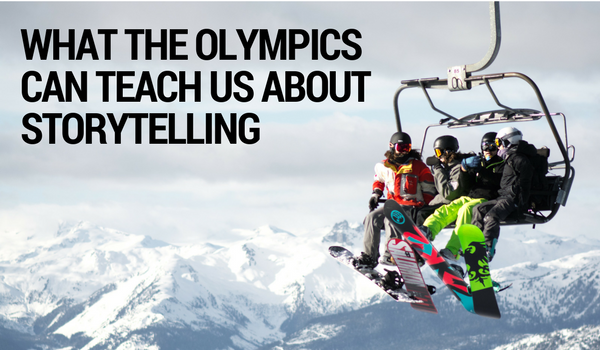
I love the Olympics and the Winter Olympics are by far my favorite. I enjoy watching sports you don’t even hear of outside of the Olympics: ski jumping, bobsled, skeleton, and, of course, curling. So all of the Olympics promos during the Super Bowl on Sunday got me so excited for the next two weeks of winter-based sports.
According to Wired, NBC is going all out to broadcast this year’s events. Not only will sports be airing live across NBC’s multiple channels, but the social media team will have streaming clips and live updates across multiple platforms. The thing about this year’s website that caught my attention was the amount of storytelling content already up.
Not surprisingly, content like NBC’s preview show focuses on high profile competitors like Lindsey Vonn, Shaun White, and Nathan Chen. But as I navigated around the NBC Olympic website, I saw an abundance of content on lesser known athletes and sports. My favorite so far has been the video about how, like Zoolander, speed skaters aren’t ambi-turners—they joke that they can’t turn right because their blades are bent to handle the left-hand turns. The playful video not only makes reference to pop culture but introduces the audience to lesser known, but just as hard-working, Olympians.
The joy in these videos is learning about the athletes and their sport (the NBC Olympics Facebook page has a great series of videos explaining lesser known sports). You get to see the athlete, get to know they a little bit better than just a name on a list online. That slight connection might turn into an interest on the part of an audience member in following them around the Games, thereby increasing viewership for NBC. Same for learning about the sports: as they educate viewers on rules of obscure sports, they can create fans that will watch the coverage, either live or on streaming.
Those personal connections and storytelling strategies can be useful in other industries as well. To market to a new crop of job recruits—like the manufacturing industry might want to target—or to show just how effective your product is—like pharmaceutical companies at trade shows—storytelling is a great way to make personal connections to prospects, increasing the likelihood of those prospects continuing down the path to purchase.
Seeing and hearing from someone first hand about their experience in a particular job or with a certain product can create more of a connection than other means, like a written testimonial or case study. Consumers crave video: it’s easier to consume, can hold attention spans, and can be more memorable than text.
Videos can also be widely used in many venues to make an impact: it can be embedded on a website, posted on social media, sent to clients and prospects via a link in an email, live on YouTube or Vimeo. Obviously the video should be targeted to the varying audiences of these multiple platforms, but the effect is still the same-to let audiences see a personal side to companies, which can often seem big and impersonal.
Do you want to make personal connections with your audience via video? Contact us today.
{{cta(‘ba56ca01-8b2a-4845-926a-06bd5840fda4’)}}
